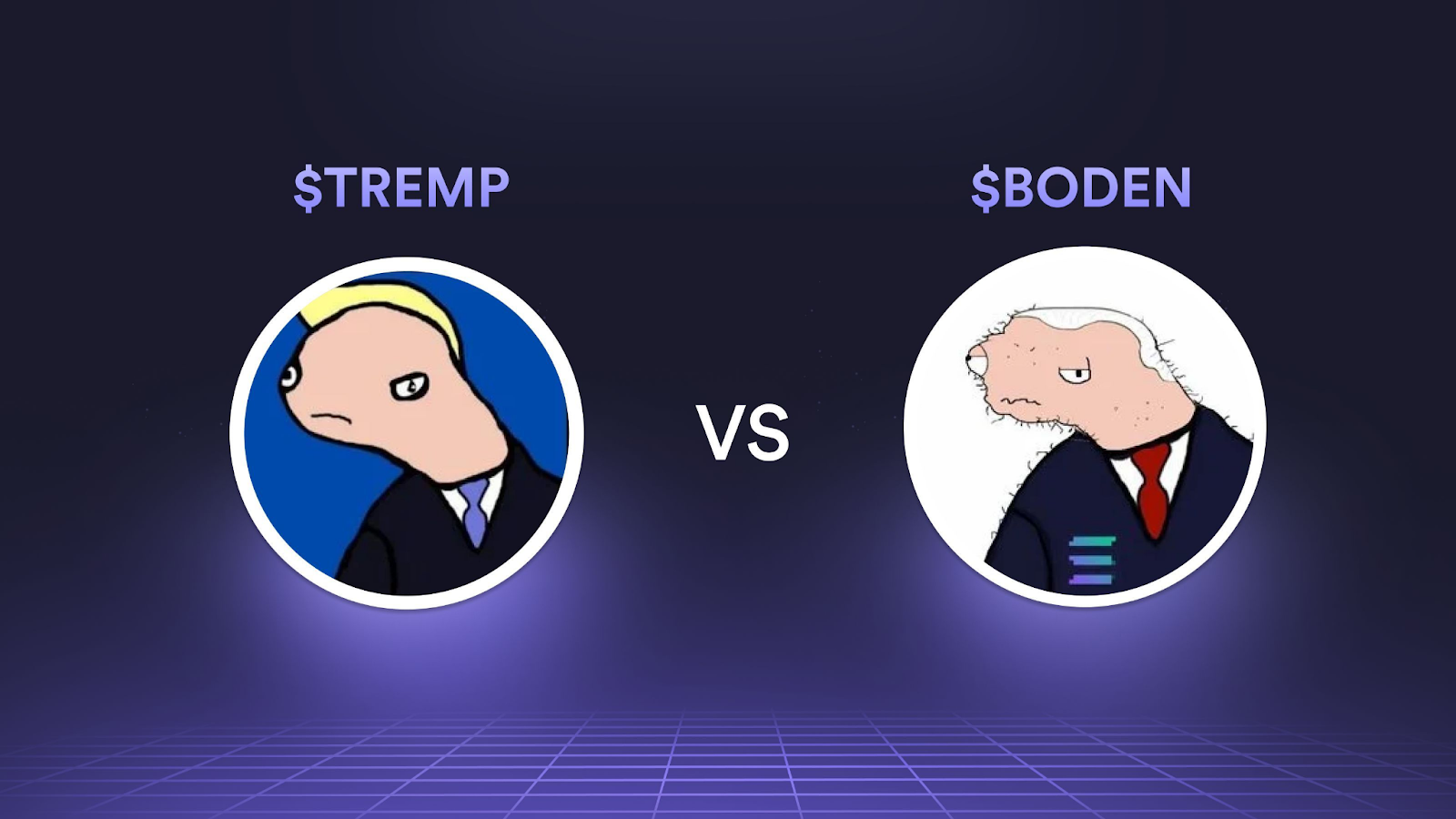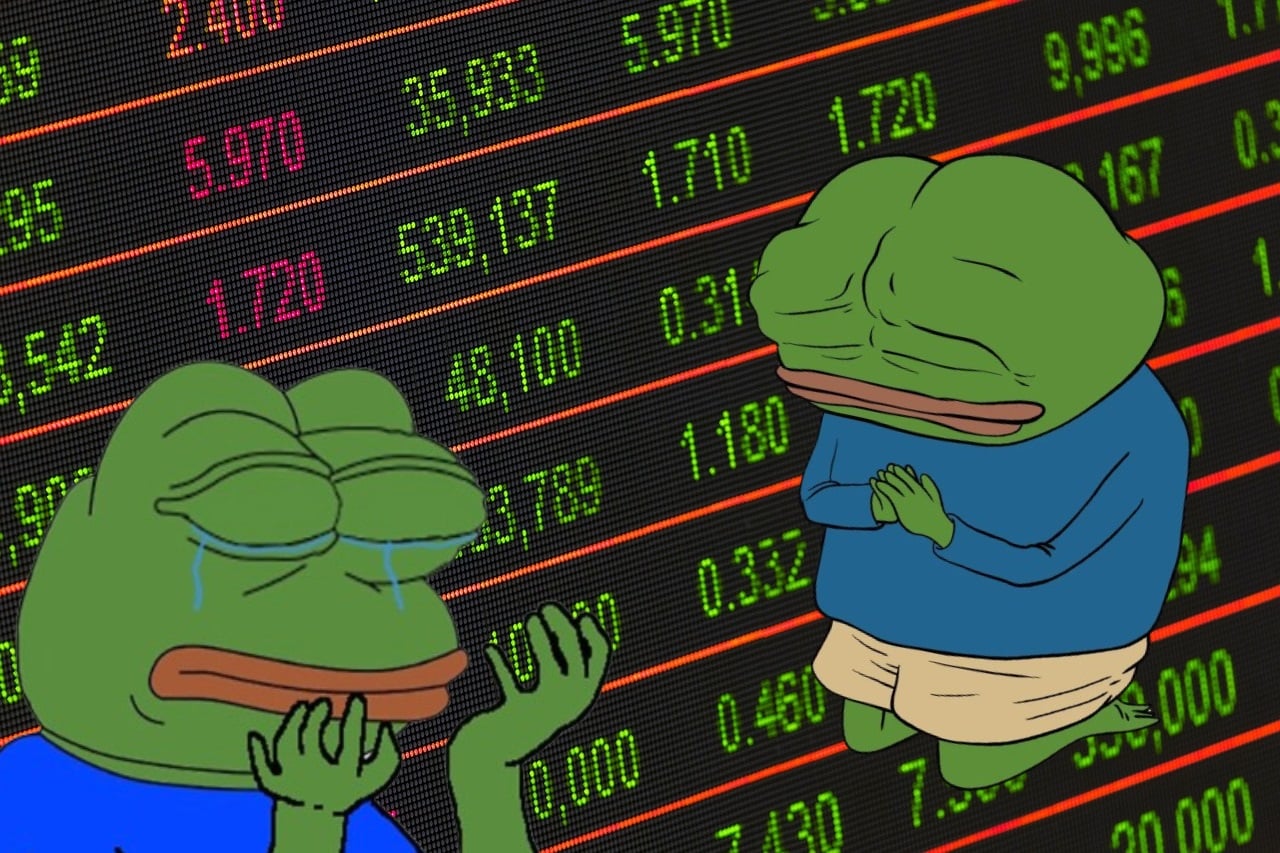


By now, you probably have a good grasp on what memecoins are. But you might still be wondering: Why do people actually buy them? Why invest in memes? What’s the potential gain, and what’s at stake? Let’s break it down!
So why did people flock to memecoins, even before they were known for their insane price swings? The answer lies in the name itself–it’s all about the MEMES! See, memes aren’t just funny pictures or videos; they’re a form of expression. Think about your favorite meme. Maybe fans of the “Distracted Boyfriend” meme relate to being torn between different temptations. Those who love the “This is Fine” meme often find themselves in stressful situations but try to keep calm and carry on. Fans of the “One Does Not Simply (walk into Mordor)” meme probably face difficult tasks, or they just really like Lord of the Rings!



The point is, everyone has a different reason for liking, sharing, and engaging with a meme. Regardless of the reason, memes are a reflection of one’s identity. The expressiveness packed into a simple meme can say so much about who a person is. Naturally, the same logic applies to memecoins!
Dabbling in memecoins is, in itself, a statement. In the early days of crypto, investors who were focused on intrinsic value typically only bought Bitcoin and Ethereum. They could read whitepapers, attend conferences, and participate in network development. But DOGE didn’t have an inherent use case or technical innovation–it was simply a meme. So, for those who didn’t want to take crypto so seriously, DOGE became a way to experiment and have fun in space. Back then, it was all about “the vibes” and the community.
Even Elon Musk understood this when he got involved with Dogecoin. Memes are much more relatable to the common Joe than terms like “digital gold” or “a smart contract hub”. Memecoins allow people to express themselves just like regular memes. For instance, even before the 2024 U.S. presidential election, crypto users were purchasing memecoins like Jeo Boden (BODEN) and Doland Tremp (TREMP) as a way of showing political support. It's not just about investing–it's about making a statement.

While memecoins are often seen as speculative assets, they offer several potential rewards. Here’s why people are drawn to them:
Memecoins are infamous for their high volatility. Unlike traditional investments, which typically yield returns over months or years, memecoins can experience dramatic price swings within days—or even hours. Investors might see their portfolios multiply by 2x, 10x, or even more in a single day if they’re lucky. For short-term traders and early investors, these rapid shifts present opportunities for significant profits.

At the end of the day, investing in memecoins isn’t just about making money–it’s about fun, connection, and sometimes even rebellion.
As tempting as memecoins may be, they come with significant risks. Understanding these pitfalls is crucial for any investor.
One of the most prevalent dangers comes from pump-and-dump schemes and rug pulls. Due to the ease of creating and promoting new coins, the memecoin space has become a breeding ground for scams. Pump-and-dump schemes rely on artificially inflating the value of a coin through coordinated hype, only for creators or early adopters to sell their holdings at the peak, leaving latecomers with heavy losses. Rug pulls occur when developers abruptly abandon a project after amassing substantial funds, rendering the coin worthless. A notorious example is the Squid Game Token, which saw its value surge before crashing to zero when developers vanished with millions.

Another challenge with memecoins is their inherent lack of utility. Most memecoins get their value from social media trends and hype rather than functional use cases. This makes them highly vulnerable to shifts in public sentiment. Unlike functional cryptocurrencies with strong networks and ongoing development, memecoins risk becoming irrelevant when the excitement wanes. A non-viral meme coin might as well be as good as a dead one.
Compounding this issue is the bandwagon effect, or FOMO (fear of missing out). Seeing others profit or noticing high-profile endorsements can tempt investors to jump into the market. Despite not doing any prior research or buying when price has already significantly rallied, the fear of missing out can cause people to get caught up in the hype and make bad financial decisions. FOMO can come from close friends/family, other investors, or even famous influencers endorsing a coin. Celebrities like Elon Musk, Snoop Dogg, Mark Cuban, and even Donald Trump have amplified this phenomenon, as a single tweet or mention from them can ignite investment frenzies. However, entering too late or choosing a lackluster project can lead to substantial losses.

Memecoins are also notorious for their extreme volatility. While this volatility can produce massive gains, it equally poses the risk of significant losses, especially for those using leverage. The same hype that propels memecoins to dizzying heights can cause abrupt crashes, erasing wealth in moments. These downturns can leave people with little to none of initial capital, depending on how reckless they were. For example, Dogecoin (DOGE) experienced a value drop of over 70% just months after reaching its peak in May 2021. This volatility requires investors to have a high risk tolerance, sound risk management, and the ability to remain calm during rapid market swings.
Market saturation further complicates the landscape, with thousands of memecoins competing for investor attention. The sheer volume of projects dilutes resources and makes it challenging to identify promising coins amid a sea of mediocrity.
Lastly, regulatory uncertainty adds another layer of risk. On one side, the lack of clear crypto regulations has allowed scams to proliferate, leading to significant investor losses. On the other, increasing scrutiny from authorities has made it more difficult for legitimate projects to gain traction. Platforms like Pump.fun, which gained notoriety for controversial practices, have highlighted how unregulated environments can also lead to abuse.
Understanding these risks is crucial for anyone considering investing in memecoins.

Pump.fun 2024 Controversy: Pump.fun, a Solana-based cryptocurrency launchpad, enabled the easy creation, trading, and listing of tokens on Raydium, a popular decentralized exchange (DEX) on the Solana network. This led to the launch of thousands of memecoins, however many of these projects turned out to be harmful.
A particularly controversial feature was its unregulated livestream option, where users would engage in questionable and even illegal activities to generate hype around their tokens. For example, beyond the usual pump-and-dump schemes and rug pulls, some users went as far as threatening to self-harm, harm animals, or even harm other people on live stream should their token not reach a certain market capitalization.
Pump.fun eventually removed the livestreaming feature, in response to growing public and regulatory backlash. This issue highlights the urgent need for better regulation in the memecoin space.
Investing in memecoins is inherently risky, but there are strategies to minimize potential losses:

Now, we know more about the psychology behind memecoins, as well as the benefits, risks and how to guard against them.
Finally, let’s take a look at where memecoins can go in the future!
.png)
.png)
.png)